Clash Of The Touch-Screen Titans Round 2: Palm Pre vs. Apple iPhone 3G S
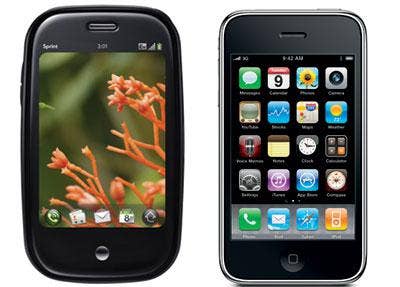
Last October, we brought you the Clash Of The Touch-Screen Titans, pitting the BlackBerry Storm, T-Mobile G1 and the Apple iPhone 3G in a head-to-head-to-head match to see which rose to the top. The Apple iPhone took the top prize, excelling in more categories than the competition.
But the touch-screen market is heating up again, with two new contenders strapping on their gloves to duke it out for touch-screen supremacy. Palm this month released the Palm Pre, its long-awaited touch-screen. Apple, however, countered back, preparing to roll out the Apple iPhone 3G S to the smartphone-hungry masses.
So here, the new touch-screen titans battle it out to see which one reigns supreme. Both devices are based on new operating systems, with Palm attacking with its new webOS and the iPhone 3G S featuring iPhone OS 3.0.
Here we offer Round 2 of the Clash Of The Touch-Screen Titans with the Pre going against the iPhone 3G S in 14 different categories to determine which is the best of the best. Two will enter -- only one will survive.
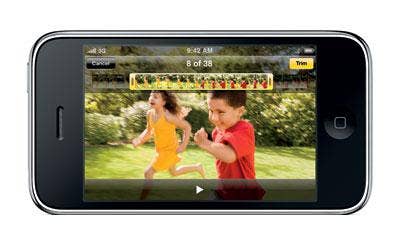
Both the Palm Pre and the Apple iPhone 3G S feature state-of-the-art cameras, which have become the cornerstone of smartphones. Smartphone users have grown accustomed to capturing images at anytime, anywhere and sharing them with friends, family, co-workers or whoever is looking.
The Apple iPhone 3G S's camera clocks in at 3 megapixels and features autofocus that adjusts focus, exposure, color and contrast to capture the best possible image. It also features an automatic macro focus for extra-close-up shots and a "tap to focus" feature that lets users tap the touch-screen to select an object or area of interest that automatically readjusts the focus and exposure. For video recording, the new iPhone offers VGA up to 30 frames-per-second with audio. In addition, the iPhone 3G S features photo and video geotagging.
The Palm Pre features a 3-megapixel camera with an LED flash and "extended depth of field." The Pre does not offer video recording, but Palm has said it may be added at some point in the future.
Both devices also let users send photos by e-mail or MMS -- soon with the iPhone -- and allow users to upload their images to a host of Web-based photo sites.
The nod in the camera category goes to the iPhone 3G S. While the Pre makes a fine showing, Apple's retooled and updated iPhone camera takes the cake, mostly because of its addition of video recording and autofocus capabilities, which make it a breeze to point and shoot.
Winner: Apple iPhone 3G S (pictured)
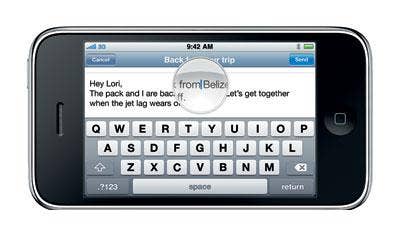
Both the Apple iPhone 3G S and the Palm Pre hang their hats on their vast multimedia capabilities, whether it's music, video, photos or any other content users want to keep on hand or in their pockets, if you will. As such, both smartphones offer ample storage for whatever users want to save.
The Apple iPhone 3G S comes in two models, offering either 16 GB or a massive 32 GB of on-board storage.
The Pre offers 8 GB of internal user storage, but also offers a USB mass storage mode. The device lacks a microSD slot for additional memory, but Palm says users can tether the smartphone to a PC via a USB cable to transfer files between the PC and a handheld device. When it comes to memory, the iPhone 3G S again takes the cake, with the largest model offering four times the storage of the Palm Pre and the smallest doubling the Pre's capacity.
Winner: Apple iPhone 3G S (pictured)
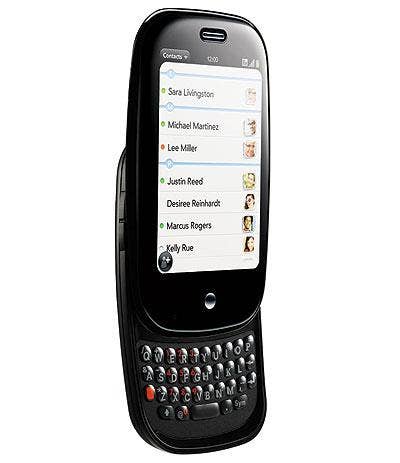
As smartphones become the go-to device for e-mail and messaging, an easy-to-use keyboard is of the utmost importance.
And while the Palm Pre lacks a virtual on-screen keyboard, it offers a physical slide-out QWERTY keyboard. The iPhone 3G S keeps the same formula as its predecessors with an on-screen virtual keyboard. Apple did, however, add the ability to use the keyboard in landscape mode, which is a step in the right direction.
This one is a matter of preference, but having a physical keyboard sets the Palm Pre apart and gives users a smidge more confidence in their typing.
Winner: Palm Pre (pictured)
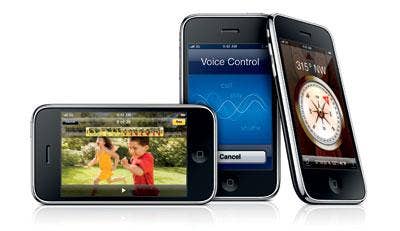
When deciding on which smartphone to buy, for some it all comes down to the price. You gotta pay to play, right? So what's the damage when buying a Palm Pre or an Apple iPhone 3G S? Well, the Pre is going to run users $199 with a two-year contract with Sprint, while the new iPhone is going to run $199 for the 16-GB model and $299 for the 32-GB monster. In addition, with the release of the 3G S, Apple slashed the cost of the 8-GB iPhone 3G to a mere $99. The iPhone requires a two-year contract with AT&T.
For what you get, the iPhone 3G S is the best bang for the buck. For the same money, users get twice the memory and all Apple has to offer. Service plan pricing can vary depending on which option users choose -- roughly $100 for unlimited data, voice and messaging on Sprint and $150 for the same on AT&T.
Still, a small amount of savings on the service plan isn't enough to give Palm Pre the spoils. When it comes to pricing, Apple's new iPhone steals it, offering two models at two different price points.
Winner: Apple iPhone 3G S (pictured)
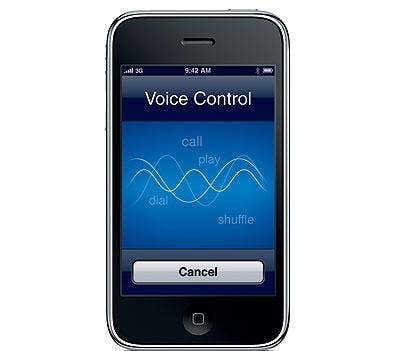
Both the Apple iPhone 3G S and the Palm Pre operate exclusively on their carriers' networks, AT&T and Sprint, respectively. So what do users get?
With the Apple iPhone 3G S, the S stands for speed. The 3G S supports the faster 7.2-Mbps 3G standard that offers faster data rates than standard 3G. The device also offers tri-band UMTS/HSDPA and quad-band GSM/EDGE.
The 3G Palm Pre uses EVDO Rev. A or UMTS/HSDPA for high-speed connectivity.
The iPhone 3G S takes the network category, offering the speediest access to data and connectivity. While the Palm Pre's speed is no slouch, using the next-generation 3G gives the new iPhone an edge, or is it EDGE?
Winner: Apple iPhone 3G S (pictured)
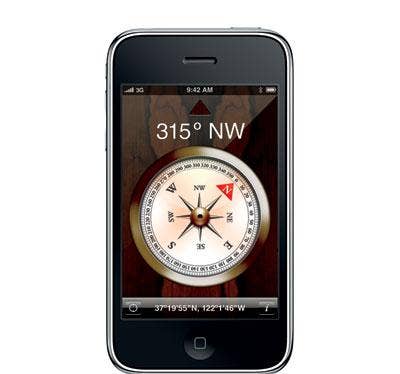
When it comes to additional connectivity, it's kind of a draw between the Palm Pre and the Apple iPhone 3G S.
Both feature Wi-Fi and Bluetooth 2.1 plus EDR. They also both feature integrated GPS.
The difference, however, comes with the iPhone 3G S's built-in digital compass for navigation. The Compass application uses GPS to tell users which way they're going and rotates as they change directions. The compass also integrates with Maps to show users which direction they're facing.
It may be as simple as a compass, but when it comes to additional connectivity options, Apple is headed in the right direction.
Winner: Apple iPhone 3G S (pictured)
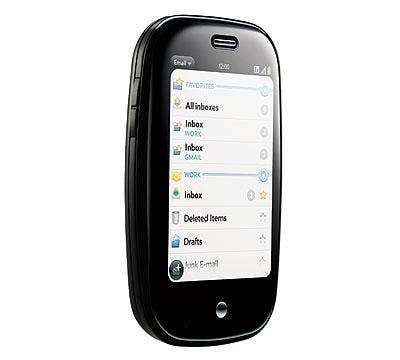
Do people still make calls on their smartphone? Maybe so, but more often than not they also e-mail and send messages, which is really what makes a smartphone so, well, smart. Both the Palm Pre and the Apple iPhone 3G S are e-mail and messaging powerhouses.
The iPhone works with popular e-mail providers like MobileMe, Yahoo Mail, Gmail, Hotmail and AOL, and most industry-standard IMAP or POP mail. The iPhone promises that multiple accounts can be added and users can move easily between them. It also supports enterprise Microsoft Exchange ActiveSync to receive and respond with push e-mail. New iPhone users can also search e-mail by subject, sender or recipient or e-mail from the Web or Maps and open myriad types of attachments.
On the messaging side, the iPhone 3G S makes messages appear like ongoing conversations. The keyboard also predicts and suggests words and offers a built-in dictionary function. In addition, the new iPhone lets users send photos and video via messages, along with audio recordings through the new Voice Memos feature. It should be noted that the MMS capability is delayed slightly, though AT&T said it'll come soon.
The Palm Pre offers Outlook EAS for access to corporate Exchange servers, along with support for a plethora of POP3 and IMAP personal e-mail accounts. It also offers support for a host of messaging capabilities like SMS, IM and MMS. And, with the Pre, when a user receives a text message or e-mail, a scrolling notification bar passes on the bottom of the screen letting users check the message immediately or save it for later.
The Palm Pre also features what it's calling "Synergy," which integrates contact info, calendars, messaging clients and search into one menu system. Essentially, Synergy takes info from Gmail, Facebook and a host of other places and presents it on a single screen and shows the ways to contact people. In addition, when users are texting, e-mailing or IMing, those conversations are put into one chat-style screen, giving users a view of all of the conversations they've had with a contact over a given period of time.
This one is tough, but since the iPhone is new to the MMS game and it isn't quite yet ready, the e-mail and messaging category goes to the Palm Pre for its robust integration of both corporate and consumer e-mail accounts and various messaging platforms. Plus, the ability to see conversations in a single string via Palm's Synergy gives the Pre a boost.
Winner: Palm Pre (pictured)
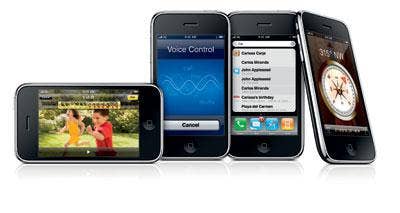
Let's not beat around the bush. The star of the touch-screen show is the display. And when it comes to the display, both the Pre and the iPhone 3G S deliver in spades.
The Pre's touch-screen is a large 3.1-incher with 24-bit color 320-x-480 resolution HVGA. The iPhone 3G S offers a 3.5-inch widescreen Multitouch display with 480-x-320 resolution. The iPhone also adds a new "fingerprint-resistant" oleophobic coating to reduce smears and smudges.
While the Pre offers a crystal-clear display, Apple wins yet again due to a few small adjustments.
Winner: Apple iPhone 3G S (pictured)
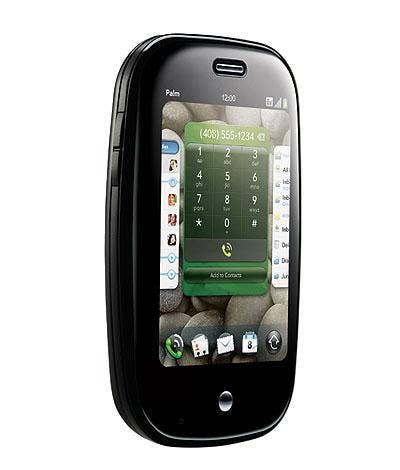
Music and video have also become major foci for smartphones, and the ability to deliver them in high quality is a must.
The Apple iPhone 3G S is a multimedia behemoth, supporting nearly every audio and video format known to man. For audio it integrates with the iPod player and iTunes store and supports MP3, AAC, WAV, Apple Lossless, AIFF, VBR and Audible formats. For video, the new iPhone features the iPod player and YouTube support; movies are available through iTunes and it supports formats like H.264 and MPEG4.
The Palm Pre also supports a host of audio formats, like MP3, AAC, AAC+, AMR, QCELP, WAV -- and video formats like MPEG-4, H.263 and H.264. Pre users can watch video or buy songs via the Amazon MP3 store and listen using a built-in music player. Palm also offers media sync to transfer Apple iTunes music, podcasts and photos to the Pre.
Despite its support for fewer formats than the iPhone, the Palm Pre wins in the multimedia category. It offers two music options from iTunes and Amazon and also video playback, making it a portable entertainment center.
Winner: Palm Pre (pictured)
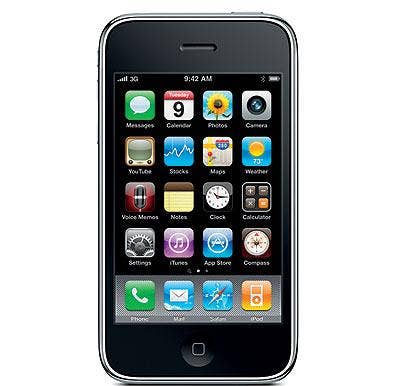
Let's face it; Trying to rival the Apple App Store, which has become the gold standard for mobile application storefronts, will be no easy feat for the Palm Pre.
Apple's App Store offers access to tens of thousands of applications that bring the smartphone to life. The Apple iPhone 3G S is no exception. The App Store lets users browse games, business apps, fitness apps, finance apps, goofball apps, and more and download them directly to the device, with the majority costing between 99 cents and $10.
Palm, too, has an application market ready to go for the Pre. According to Palm, applications designed for the Pre's new webOS platform lets users work with calendar, contacts and other apps by browsing a catalog on the phone and downloading them over the air. Palm also adds an interesting twist using what it calls "activity cards," which lets users keep several applications open at once and easily move between them without closing them down. Users flip through them, move them around and can throw them away off the screen.
While the Palm Pre is making waves in the application space, the App Store has become the be-all-and-end-all and the application store every smartphone maker wants to unseat. iPhone users have downloaded more than 1 billion applications in the year or so since the App Store went live and the downloads continue to climb. Common sense dictates that the release of the iPhone 3G S and iPhone OS 3.0 will only push application developers to make stronger applications.
Winner: Apple iPhone 3G S (pictured)
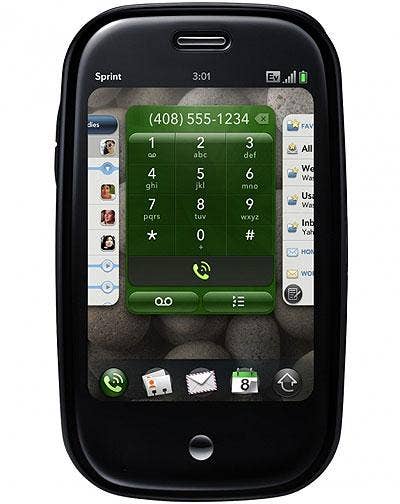
The smartphone will no doubt soon overtake PCs and notebooks as the preferred device to access the Web. As speeds increase and networks improve, the mobile Web has become nearly as reliable and robust as its fixed counterpart. With that in mind, both the Palm Pre and the Apple iPhone 3G S offer top-notch Web-browsing capabilities.
The Palm Pre's webOS browser is based on WebKit, meaning it's swift and responsive, just like the browsers of the iPhone and T-Mobile G1, which also are built on WebKit. It also supports multitouch gestures similar to the iPhone's. The Palm Pre and webOS also feature a "Universal Search" function, which lets users search contacts, applications and the Web just by starting to type. When users type in a search query in contacts and applications, the device starts with information on the phone, then searches Google, Google Maps, Wikipedia or Twitter.
Apple iPhone 3G S features a Safari browser, which lets users rotate the device to view in landscape or picture mode. The iPhone offers "double tap" and "pinch" for zooming in and out of Web pages. The browser also lets users bookmark pages that can be synced on their Macs or PCs. Similar to the Pre's Universal Search, the new iPhone lets users search the phone, servers and across applications.
Both smartphones also feature copy-and-paste capabilities. While both browsers are robust and reliable, the Palm Pre and webOS take this category for its innovative use of searching both the device and the Web while also offering a strong and speedy browser.
Winner: Palm Pre (pictured)
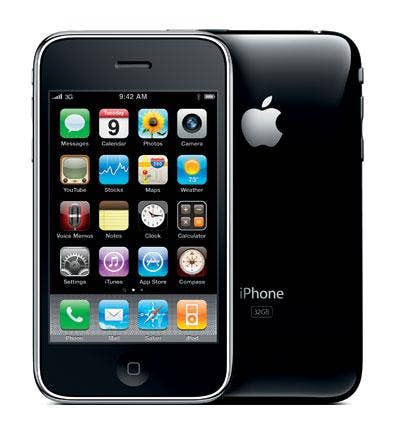
If you're going to be out and about, searching the Web, making calls and sending e-mails and text or multimedia messages, the battery has to hold up. Both the Palm Pre and the Apple iPhone 3G S offer long enough battery life so that you won't be left stranded without enough juice.
The Apple iPhone 3G S features a built-in rechargeable lithium-ion battery that charges via USB to a computer or power adapter. It offers up to 12 hours of 2G talk time, five hours of 3G talk time and standby time of up to 300 hours. For Internet use, the new iPhone offers up to five hours on 3G and up to nine hours on Wi-Fi. And with video and audio playback, the iPhone 3G S's battery can support up to 10 hours and up to 30 hours, respectively.
The Palm Pre's official battery life has not been revealed. The smartphone does feature a removable, rechargeable battery that, by many accounts, offers five hours or more of talk time.
The new iPhone packs the most power. Apple makes it clear what the iPhone 3G S is capable of and for how long, showing that the company is confident in its product. The Palm Pre's lack of transparency when it comes to battery live leaves us wondering if we'll be left out in the cold with a dead battery.
Winner: Apple iPhone 3G S (pictured)
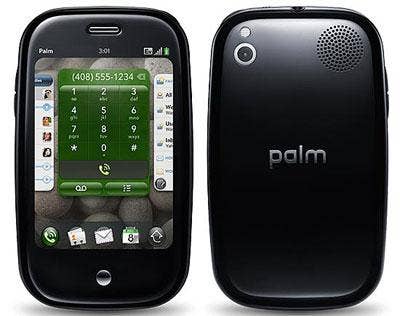
This isn't Zack Morris' world anymore. The clunky bricks of yesteryear are long gone. Smartphone buyers want a device that is chock-full of features and functions that won't weight them down. Both the new iPhone and the Pre are compact and lightweight.
The Palm Pre's smoothed-stone design has it clocking in at 3.9 by 2.3 by 0.67 inches and weighing 4.76 ounces. The new iPhone comes in at 4.5 by 2.4 by 0.48 inches and weighs 4.8 ounces. The Pre is available only in basic black, while the iPhone is available in both black and white.
The Palm Pre is breaking the mold with its new polished design, while the iPhone is rehashing its standard candy-bar form-factor. The fact that the Palm Pre weighs slightly less and, while a hair thicker, comes in more compact, gives the Pre an edge in this category.
Winner: Palm Pre (pictured)
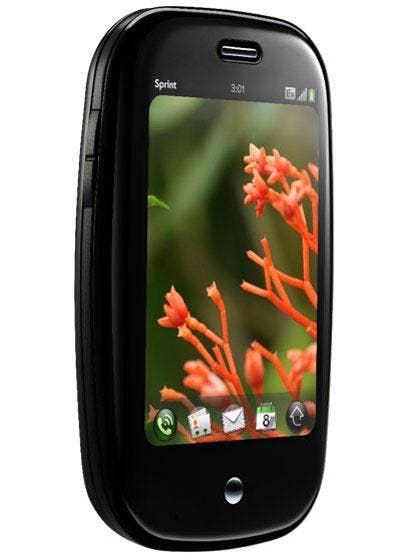
Smartphones are a lot of fun, but it's also important that they perform key business functions. What good is it being able to receive documents via e-mail if you can't view and edit them right on your smartphone? The Palm Pre and the Apple iPhone 3G S each offer some form of document viewing and editing.
The Pre features Documents to Go viewers and optional Documents to Go with full editing, while the iPhone 3G S features viewers compatible with Microsoft Office, though not editing.
In addition, the iPhone offers QuickOffice and is expected to soon offer Documents to Go.
Because editing is not yet available on the new iPhone, the Palm Pre takes this category, showing that it has just enough style to be a hip consumer device, but also packs in enough business functionality to keep the boss happy.
Winner: Palm Pre (pictured)

The Apple iPhone 3G S is the latest touch-screen titan. It's no surprise, since the last time the first-generation iPhone 3G came out the victor.
The iPhone does it all, and what it doesn't do will surely surface in the next iPhone model or iPhone OS update.
Key features that earned the iPhone 3G S the crown and bragging rights include its robust camera and video recording capabilities, the application integration via the Apple App Store, its long battery life, multiple connectivity options and its killer touch-screen display. While the Palm Pre is no slouch, it can't hold a candle to the iPhone, which has managed to dominate the market and reinvent itself with every generation.
Final Score: Apple iPhone 3G S: 8; Palm Pre: 6